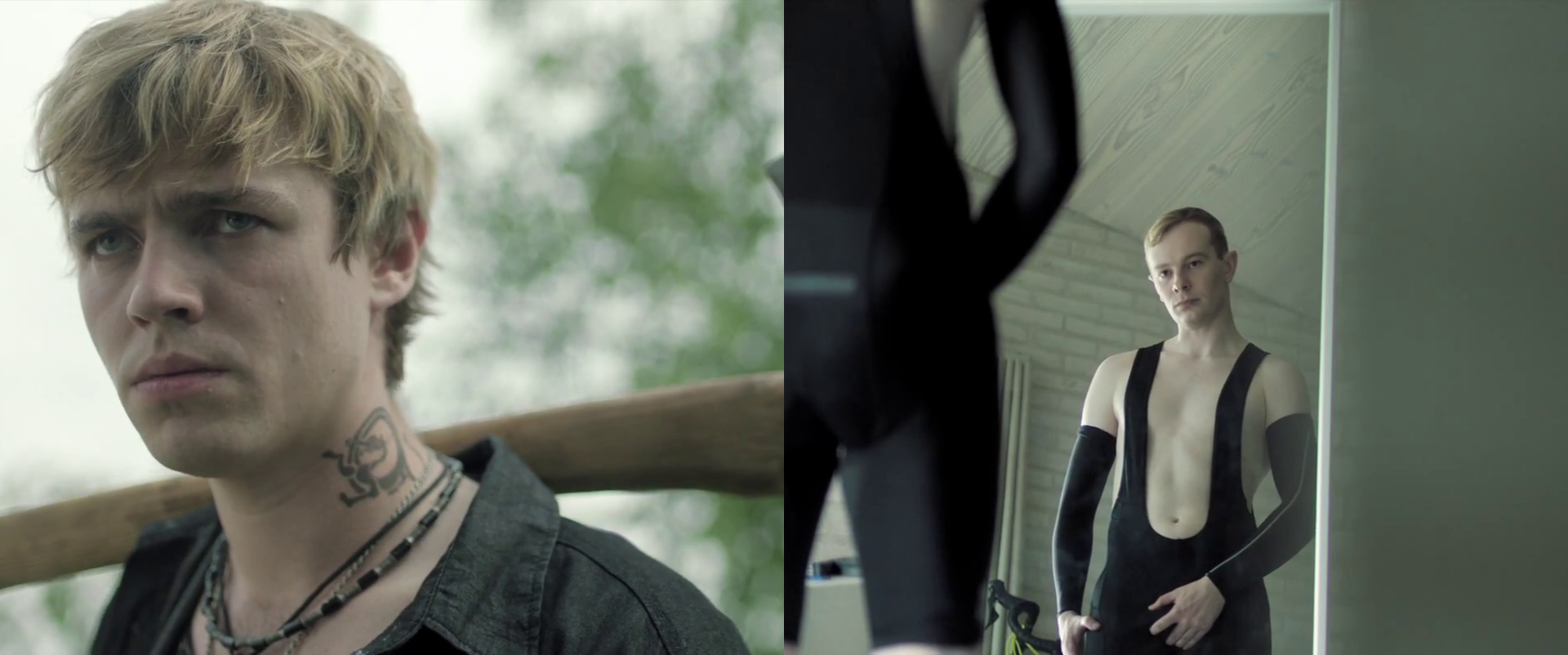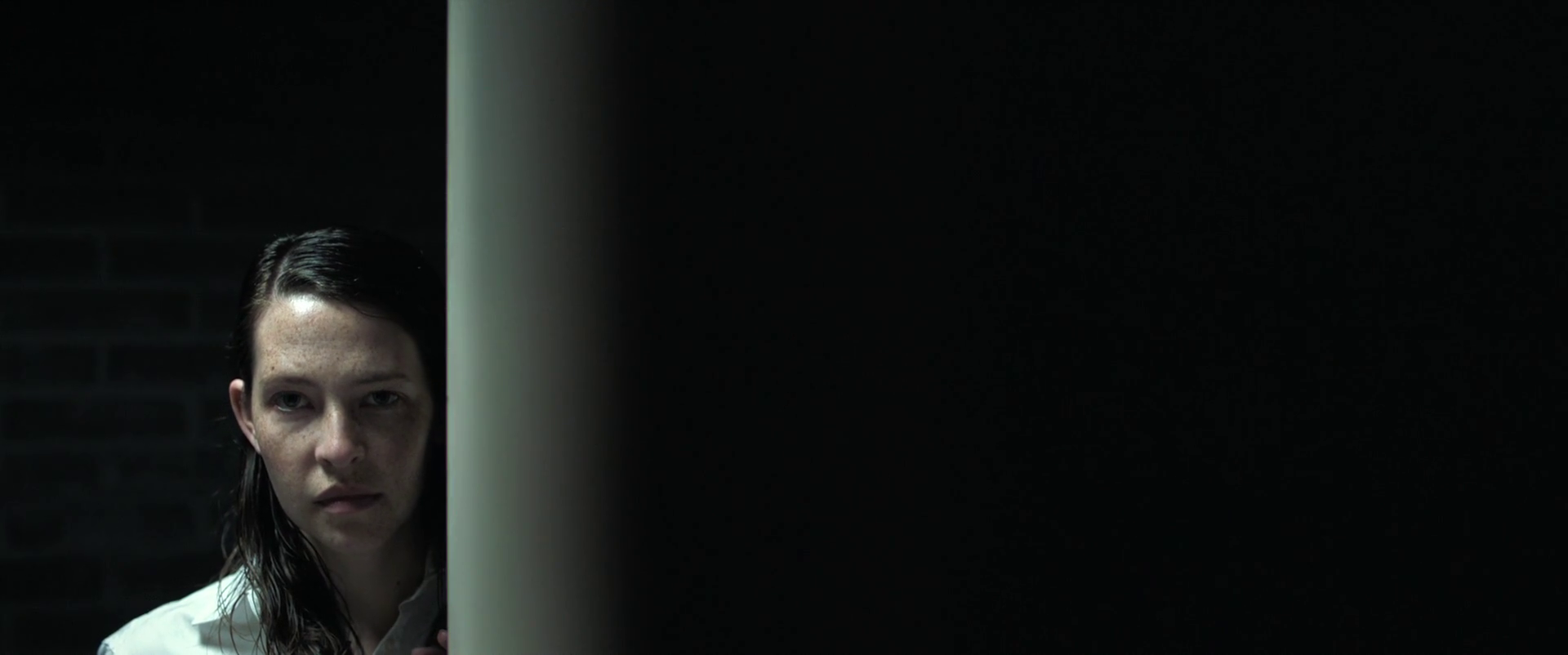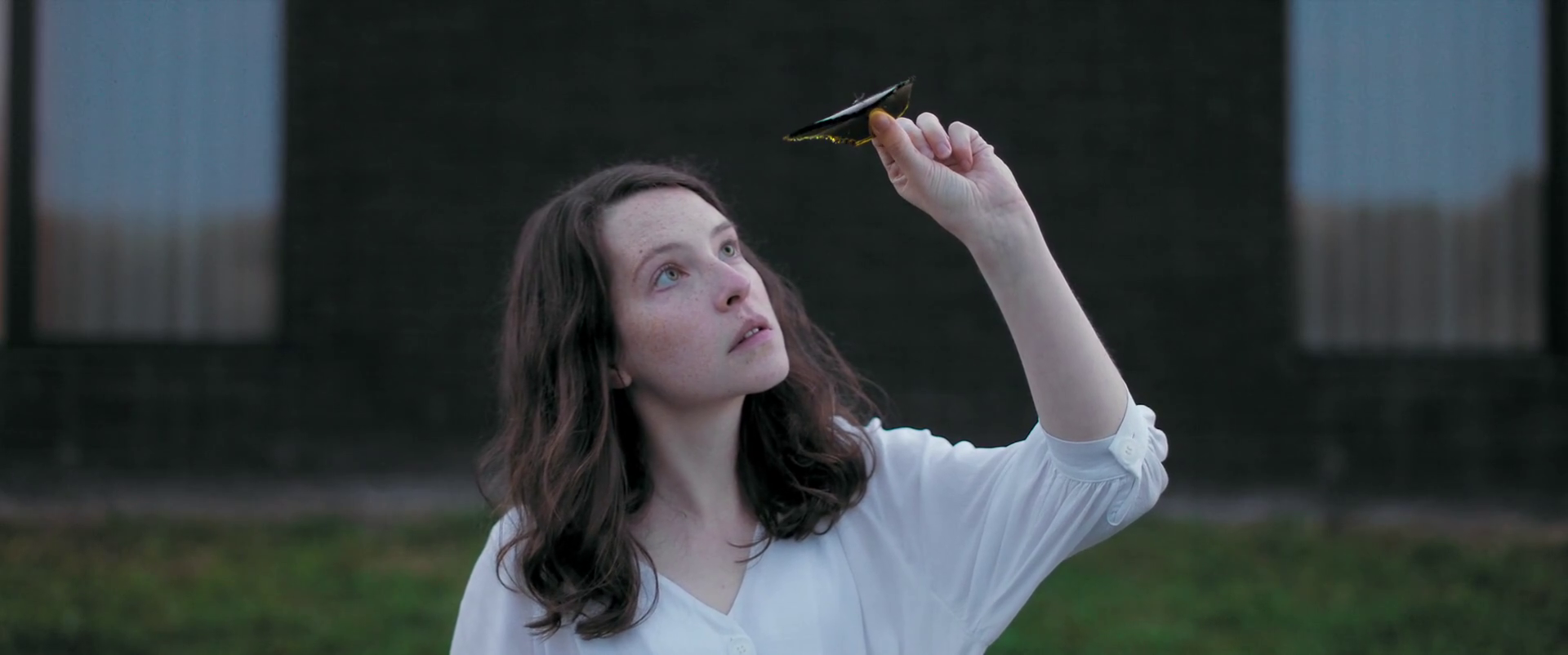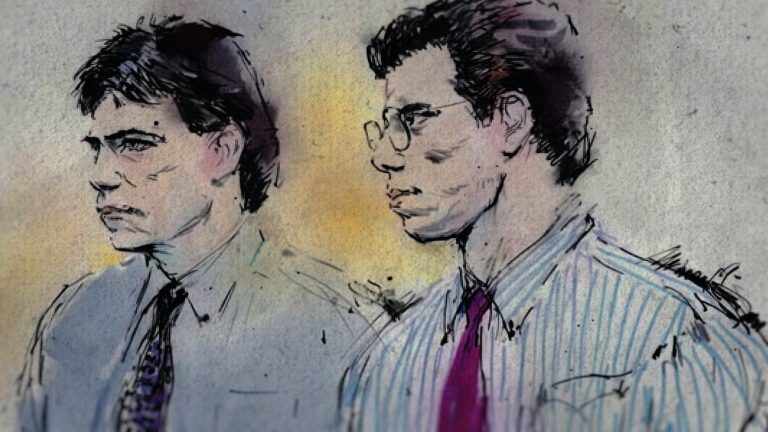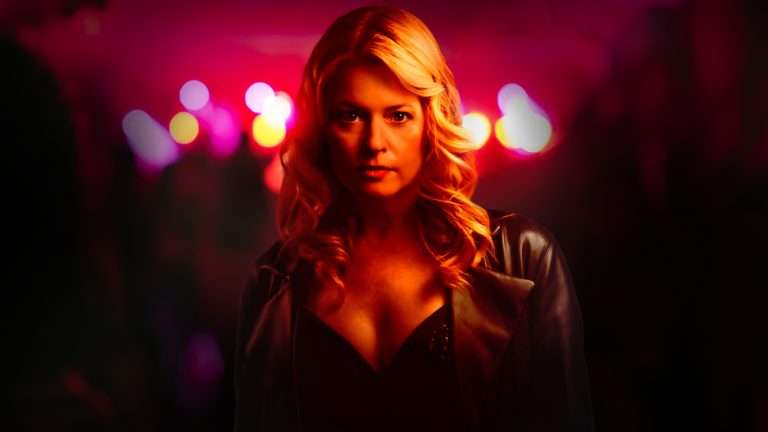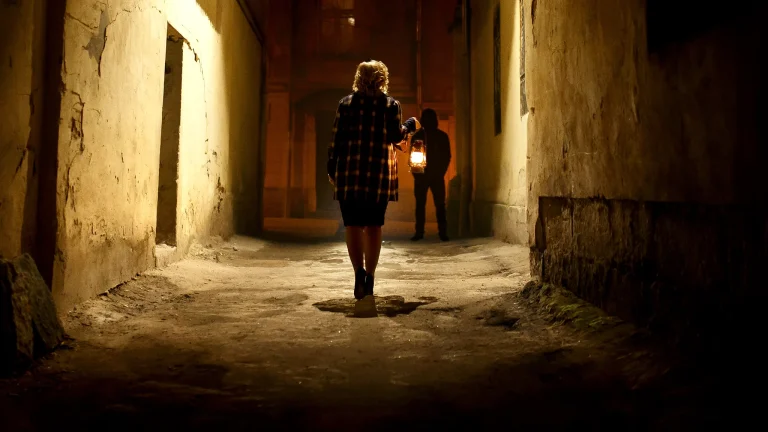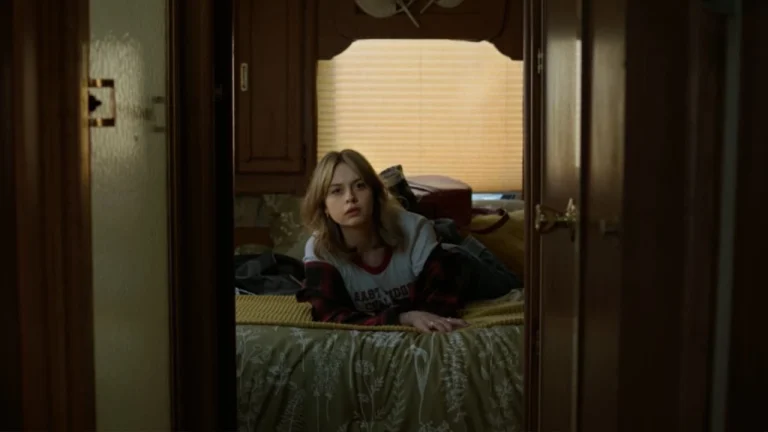The Feast Movie Ending Explained & Themes Analyzed: The Welsh film “The Feast” is directed by debutant Lee Haven Jones and is a horrific eco-horror that first premiered at 2021 SXSW before going to become a hit at Fantasia, the biggest genre festival in the world. To put it mildly, it is a film that enjoys drenching the viewer in buckets of blood by taking the capitalist pigs to the slaughter.
It lacks a certain panache in its execution for a first-time director, failing to leave a lasting impression beyond its superb cinematic images, but it can’t be denied that it has all the goods for a scrumptious meal. Especially if you are a horror fan and have been waiting for low-key horror movies that don’t go into unhinged jump scares and random acts of violence for the sake of it.
However, more casual viewers might find some of its more vague and metaphorical inclinations hard to follow. To make things easier for you, I have dissected and analyzed “The Feast” as a simplistic horror premise, and the heady metaphors are analyzed in the sequence they appear in the narrative. Please be aware that this article is full of spoilers, so only read further when you have seen the film.
The Feast Movie Synopsis & Summary:
The film is broken into six chapters, each of which is titled after a piece of information revealed within the duration they last. These phrases don’t hold much of a grander subtext, except that they also hint towards the happenings and the thematic elements that director Lee Haven Jones is going for. But before we get to the final setting of the film; a posh estate in the Welsh mountains, we are served with a sort of bloody prologue.
It is almost as if the director wants us to be aware of what is about to happen, making us witness the death of a man who had been drilling oil in a place that doesn’t feel too far away from the house where the feast is about to take place.
These sequences pave the way for chapter number one that’s entitled ‘I want to make a good impression.’ The camera slowly captures the rustic interiors and beauty of the facade that is home to 4 people. This family of four includes the father Gwyn (Julian Lewis Jones), the mother Glenda (Nia Roberts), and the two sons Guto (Steffan Cennydd) and Gweirydd (Sion Alun Davies).
The chapter introduces a lot of things. Firstly, the posh house serves as a character in itself. It is a large penthouse, located somewhere in the hills, surrounded by the serene beauty of nature. Then we follow Glenda, who seems to be the one in charge of everything that happens in and around the house. We later learn that she is originally from these lands and the property on which the house is made has been inherited from her parents.
We get introduced to Gwyn, the owner of the house after he returns from his hunting exertion. He is a member of the London parliament and has sold most of the land that Glenda inherited to a mining company.
The two sons feel rather peculiar to the normal senses. While Guto has been asked to return home after a few too many nuisances in London and his dark tryst with drug addiction, Gweirydd has left his doctoral practice in between to prepare for a triathlon.
The film and its actual mysteries kick in when a young woman named Cadi (Annes Elwy) randomly shows up at their doorstep dressed up in a waiter’s uniform. Without much questioning, Glenda lets her in because she has been doing all things on her own up until now. The occasion is rather ominous; where the family has gathered to have a feast along with their two guests. The first of whom is Euros (Rhodri Meilir) and the second a local farmer named Mair (Lisa Palfrey). As preparations ensue, weird things start happening all around the house.
Related to The Feast Movie Explained – Master (2022) Movie Explained: Ending and Themes Analysed
Why has the family organized this titular Feast?
The reason behind Glenda and Gwyn organizing the feast is pretty simple. We know that they are a rich family. But what rich person doesn’t want to get richer? The Feast is their way to lure more people into their chain of exploiting natural resources.
Glenda, who had inherited about 300 acres of land from her parents was helped by their family friend Euros into becoming a rich powerful entity within the estate. Euros, who is a businessman helping out people with inherited wealth, had sold part of Glenda’s land to a small business which in turn established mining work on it.
The family, from whatever profits they had out of the land, developed the present estate over the rest. However, much like the cycle of violence, the cycle of greed only wants more and more. So, Glenda and Gwyn had also invited their friend and local farmer Mair for the feast in order to make some kind of deal between Euros, for she also inherited a large piece of land that runs parallel to the mining workplace.
Since one of the mining mishaps has caused the mining organization to realize that Mair’s land would be more fruitful for them, they want to strike some kind of deal with her. The Feast is less of a celebration and more of an exhibition of the family’s greed in getting more out of the deal that Mair would have with Euros.
Why did Mair refuse to take the deal? What is she scared of?
Mair, who is a simple farmer is appalled by Glenda’s preposition that she sells off her land as well. Mair, who has been a resident of the lands for as long as she remembers, believes in the legends of the land. The sight where the blood-soaked opening takes place is called “the Rise.” It is a place where an otherworldly entity that takes care of the land sleeps.
According to the legends of the Welsh land that director Lee Haven Jones purposely wants to covey, this entity should not be disturbed. So, when Mair comes to know that Euros’ intentions are to dig up “The Rise” she decides to leave the feast and the estate in a hurry. However, she is not aware that “The Rise” has already been drilled and that the entity has awakened to take revenge.
What is wrong with the two brothers?
The two brothers feel like outcasts who have no reasons to be on the estate. They are both grown up, but you can see a shadow of their parents on them. While they are both back home due to the family feast, the film also tells us about their empty demonic heads.
We learn that Guto has a history of substance abuse and that his life back in London was snatched away by his parents because they wanted him to get better. Similarly, Gweirydd, who claims to have left his medical practice to prepare himself for the tournament, was actually accused of raping his patients in the hospital.
Related to The Feast Movie Explained – Windfall (2022) Movie Explained: Ending and Themes Analyzed
Who is Cadi?
We first meet Cadi at the gates of the estate. She is first noticed by the younger son before Glenda cuts in and takes her in, thinking that she is the helper that she had requested. When she first appears her hair is wet and she doesn’t say a word for a large chunk of the first act. It is almost as if the otherworldly presence in her is acclimatizing to the life of humans. Anyhow, there are stretches within the film when dirt comes off her body, straining tablecloths and her blouse.
Her mysterious presence is revealed in unsettling ways when she keeps humming an old folk song (contrary to the contemporary world) that Glenda remembers her mother singing. This and many other instances throughout the film make us aware of the fact that Cadi is not what she claims to be. It is (a) either she is dead, or (b) her body has been taken over by someone else. Both of which happen to be true as we reach the final moments of the film where Mair reveals that Cadi’s body was found in the water after an accident.
This ensures us that the entity that had awaked from “the rise” due to the drilling had taken over Cadi’s dead body and is out for revenge against the family that has ravaged the land for their profit.
The Feast Movie Themes Explained:
Nature bites back:
Someone once said that if you destroy nature, the earth doubles up with contrasting results. If the recent COVID pandemic or climate change happenings are not hints enough, director Lee Haven Jones serves up some seriously fucked up, but totally understandable metaphors for us. One of the most common themes that is readily visible throughout the runtime of The Feast is how nature reacts to human cruelty.
Human beings are known for their selfish ‘take it until nothing’s left’ worldview. In The Feast, the family is so greedy that they are eager to involve more people in their improper scheme of exploiting the beautiful lands.
In the film, the killings of the members of the family are depicted in the exact same manner in which they exploit nature. The opening death and the constant loud noise that Gwyn hears is how nature is reacting to their exploitation. Since they had drilled their way into the hearts of the earth, nature is replying with an equally violent setback.
Gweirydd was punished for his wrongful deeds towards humanity with an equally violent act of karma. While Cadi coerces him to have intercourse with her, the glass that she had previously placed in her vagina eventually chops off his penis and he bleeds to death. Thus paying for the fact that he raped his vulnerable patients.
Guto, on the other hand, pays his debt when Cadi violently chopps off his leg. This is directly related to the shot where we see him chopping off trees that surround the estate. Glenda later serves that raw leg to Euros who chews it off and eats vehemently. The metaphor here is Glenda offering her land (read: her child) to be exploited.
The emptiness of privilege:
Another important thing that The Feast somehow depicts is how empty the life of privilege actually is. This theme runs through the film with the geography and interior of the house serving as a metaphor for the same.
For instance, there’s a sequence where Glenda shows Mair the most peaceful place in the house (her sauna), to which Mair replies that it looks more like a prison than anything else. This is to signify that even though Glenda has reached a place of great privilege, she is bound and caged inside a bubble of guilt and regrets.
In fact, if you look closely at the gorgeous house in which the film takes place, you will notice how the director uses silence to amp up the anxiety of living in one. There are big, open spaces, but the architecture of the house feels like it is hiding secrets in every nook and corner.
This feeling is further enhanced when we see that all of them have vices and perversions that they are trying to conceal. However, the transparent exteriors are always letting them in. The emptiness of privilege is on full display when we see that Gwyn is a lying alcoholic (he claims to have killed the rabbits when he clearly hasn’t), the bulging, testosterone-filled aggression in Gweirydd is heightened by the close up of him sexualizing his own body and Guto hides the emptiness by filling his body with drugs.
Glenda seems to be the only one who is a bit aware of her empty existence; cue to the sequence where she talks about the painting on the wall and how it is nothing but a farce put to display.
The Feast Movie Ending Explained:
The ending of The Feast, or more specifically the last chapter moves from an unsettling, atmospheric chiller to a full-blown, gory horror finale. The inevitable happens and Cadi (who is possessed by the legend of ‘The Rise’) manages to kill every single family member (plus Euros who is killed by Glenda).
When Cadi’s job is done, she quietly leaves the house with her whole body drenched in the mayhem of the blood that was spilled. The final sequence is a static shot of Cadi walking away from the house to the drilling site, captured with ethereal music and exquisite framing.
As she slowly walks toward the camera tired from all the killing, the actor breaks the fourth wall just for a few seconds, almost as if staring right into the soul of the viewer. While Cadi (and the entity/the legend) is now going to rest peacefully in the land that belongs to them, the stare signifies that it is a direct warning to the viewers, who, for obvious reasons are a part of the exploitative race that only takes and takes from the nature without giving back.
This can be clearly seen from the title of the last chapter which reads: “after you’ve taken everything, what will be left?” Pointing toward the decay in mineral wealth from the lands that were exploited by the humans.


